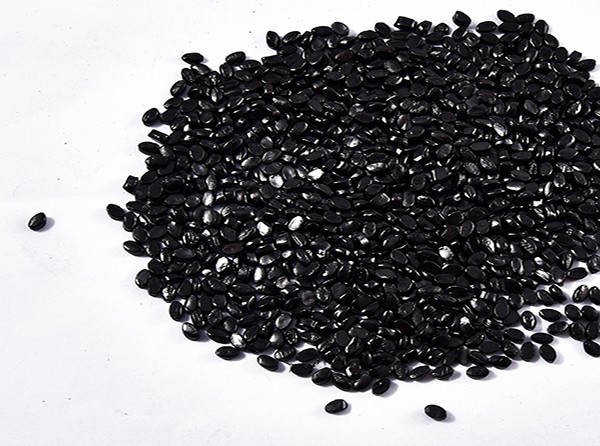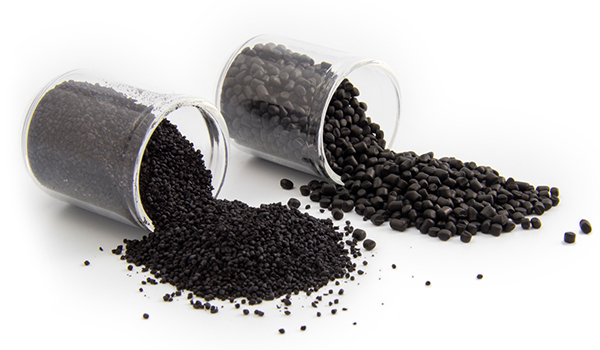When there are pitting spots in the black masterbatch of sheet PVC, we should first think about whether the mold is rusty. If there is no rust phenomenon in the check mold, it is quite bright, and there is no spot, we should increase the melt temperature and back pressure to improve the quality of the melt, although the situation may be slightly better, but still can not completely remove the pitting. When this happens, we should consider whether the toner is not completely melted. Because the mold surface is too smooth and bright, the fine powder particles remaining on the surface of the injection parts will be reflected truthfully.
Therefore, the color is used to match the color, the pockmark automatically disappears, and the surface of the injection molding part is as bright as a mirror. In actual production, we found that the proportion of black injection moulded parts in this situation is relatively large. Therefore, the surface bright parts in the pitting problem, may wish to consider the problem of toner.

Black spot defect analysis and elimination method
The melt temperature is too high
The material temperature is too high will cause the molten material to overheat decomposition, forming carbide, in order to avoid the molten material overheat decomposition, for PVC and other heat-sensitive thermoplastic materials, must strictly control the barrel tail temperature can not be too high. When black spots and stripes are found on the surface of the plastic parts, the temperature controller of the barrel should be checked immediately to see if it is out of control, and the temperature of the barrel and mold should be appropriately reduced. However, it is worth noting that if the material temperature is too low, it will also produce bright stripes on the surface of the plastic parts
The cartridge gap is too large
If the wear gap between the screw and the barrel is too large, the fused material will be retained in the barrel, resulting in local overheating decomposition of the retained molten material resulting in black spots and streaks. In this regard, the barrel temperature can be slightly reduced first to observe whether the fault can be eliminated. Secondly, the cylinder, nozzle and mold should be checked for dead corners and polished smooth.
After taking the above measures, if the fault is still not eliminated, the equipment should be repaired in time and the gap between the screw and the barrel should be adjusted.
The melt and the mold wall friction overheating
If the injection speed is too fast, the injection pressure is too high, and the relative motion speed between the molten material and the cavity wall is too high when filling the mold, it is easy to produce friction overheating, which causes the decomposition of the molten material to produce black spots and wrinkles. In this regard, the injection speed and injection pressure should be appropriately reduced.
Poor exhaust of cylinder and mold
If the cylinder or mold exhaust is poor, the residual gas in the molten material will cause combustion due to adiabatic compression, causing the molten material to decompose over heat and produce black spots and streaks. Therefore, the injection speed can be reduced appropriately, and the structure of cylinder exhaust port can be improved under the condition of suitable particle size and uniformity of raw material.
For the poor exhaust of the mold part, it is necessary to check whether the position of the gate and the position of the exhaust hole are correct, and whether the type of gate is suitable; Remove volatile substances such as anti-rust agents adhering to the mold; And reduce the amount of release agent. Under the premise of no overflow flash, the clamping force can be properly reduced and the exhaust gap can be increased. In addition, the barrel and thimble should be checked for oil leakage faults.
 About usDongguan Jinzhen Plastics Co., LTD., founded in 2009, headquartered in Shipai Town, Dongguan City, Guangdong Province, is a professional enterprise engaged in the research and development, production and sales of plastic black masterbatch.
About usDongguan Jinzhen Plastics Co., LTD., founded in 2009, headquartered in Shipai Town, Dongguan City, Guangdong Province, is a professional enterprise engaged in the research and development, production and sales of plastic black masterbatch. ProductDongguan Jinzhen Plastics Co., LTD., founded in 2009, headquartered in Shipai Town, Dongguan City, Guangdong Province, is a professional enterprise engaged in the research and development, production and sales of plastic black masterbatch.
ProductDongguan Jinzhen Plastics Co., LTD., founded in 2009, headquartered in Shipai Town, Dongguan City, Guangdong Province, is a professional enterprise engaged in the research and development, production and sales of plastic black masterbatch. Industry applicationDongguan Jinzhen Plastics Co., LTD., founded in 2009, headquartered in Shipai Town, Dongguan City, Guangdong Province, is a professional enterprise engaged in the research and development, production and sales of plastic black masterbatch.
Industry applicationDongguan Jinzhen Plastics Co., LTD., founded in 2009, headquartered in Shipai Town, Dongguan City, Guangdong Province, is a professional enterprise engaged in the research and development, production and sales of plastic black masterbatch. NewsDongguan Jinzhen Plastics Co., LTD., founded in 2009, headquartered in Shipai Town, Dongguan City, Guangdong Province, is a professional enterprise engaged in the research and development, production and sales of plastic black masterbatch.
NewsDongguan Jinzhen Plastics Co., LTD., founded in 2009, headquartered in Shipai Town, Dongguan City, Guangdong Province, is a professional enterprise engaged in the research and development, production and sales of plastic black masterbatch. Contact usDongguan Jinzhen Plastics Co., LTD., founded in 2009, headquartered in Shipai Town, Dongguan City, Guangdong Province, is a professional enterprise engaged in the research and development, production and sales of plastic black masterbatch.
Contact usDongguan Jinzhen Plastics Co., LTD., founded in 2009, headquartered in Shipai Town, Dongguan City, Guangdong Province, is a professional enterprise engaged in the research and development, production and sales of plastic black masterbatch.

 在線客服
在線客服
 189-2821-9366
189-2821-9366


